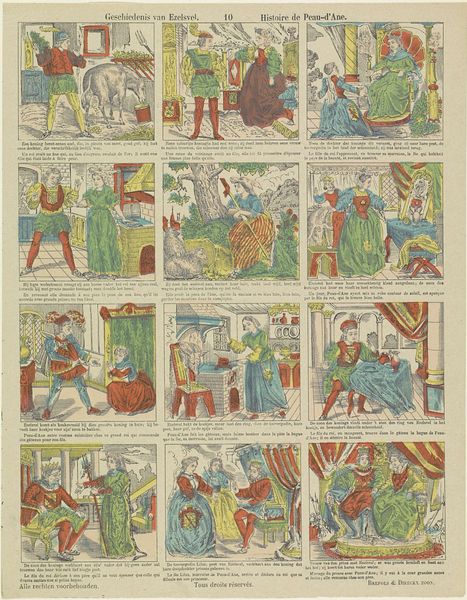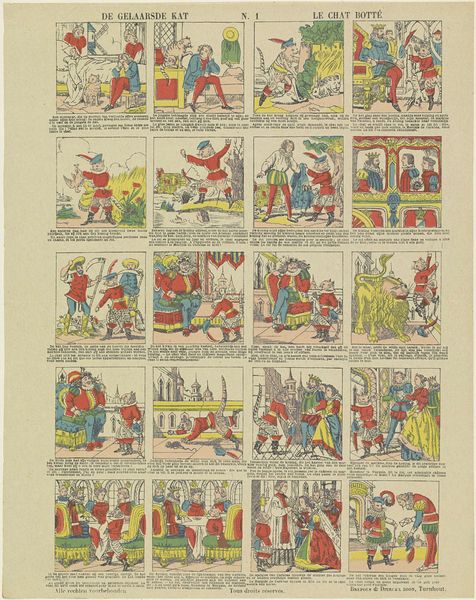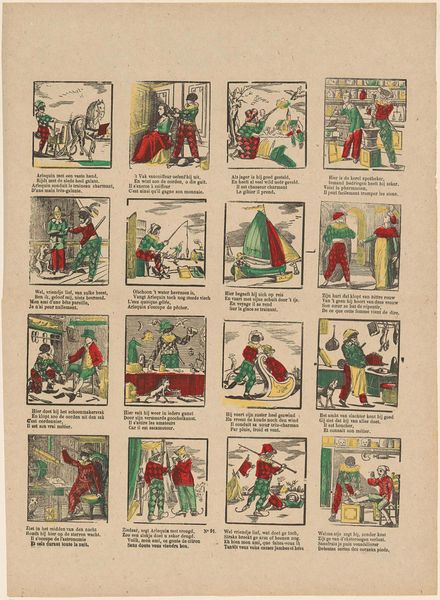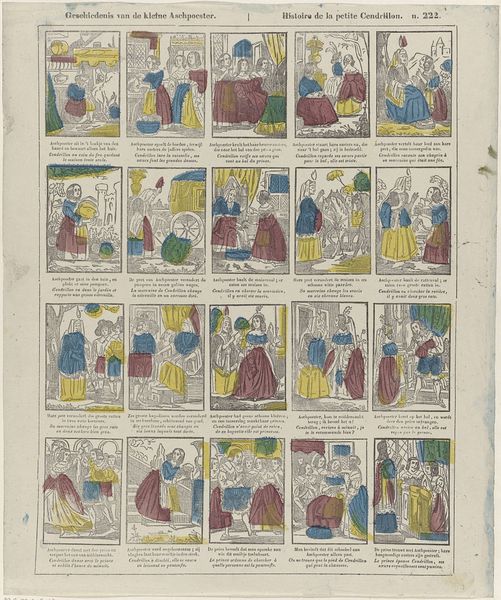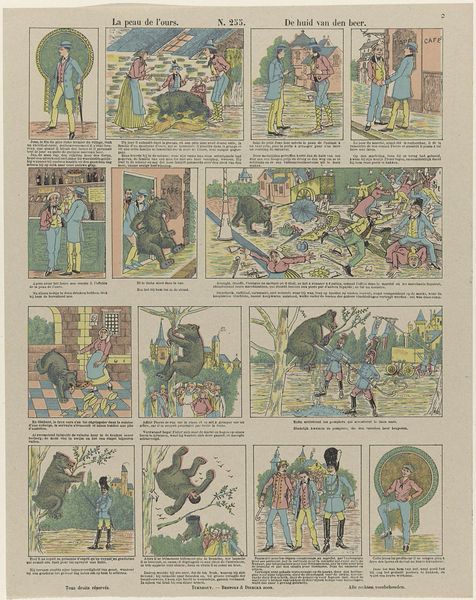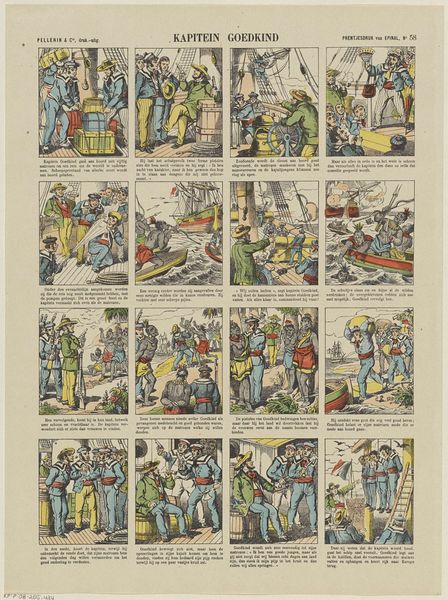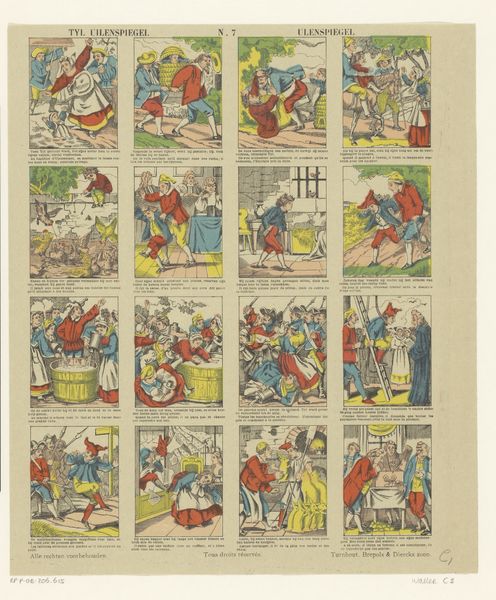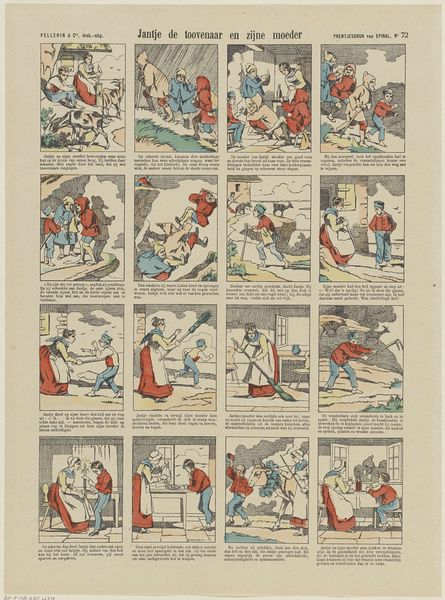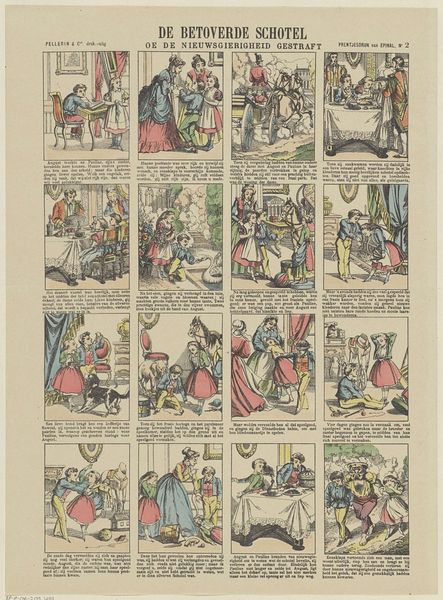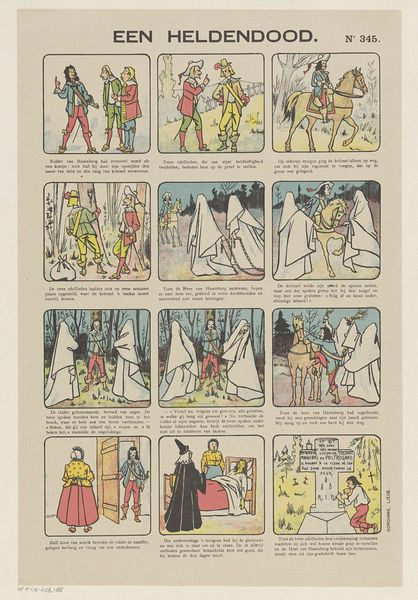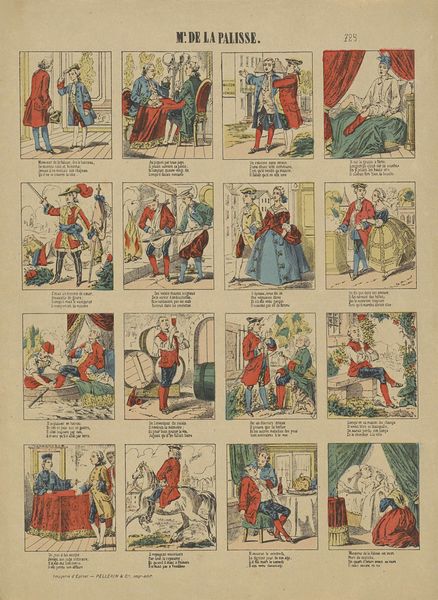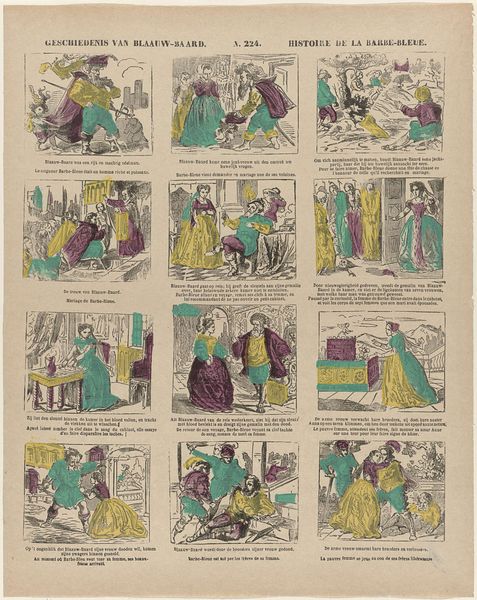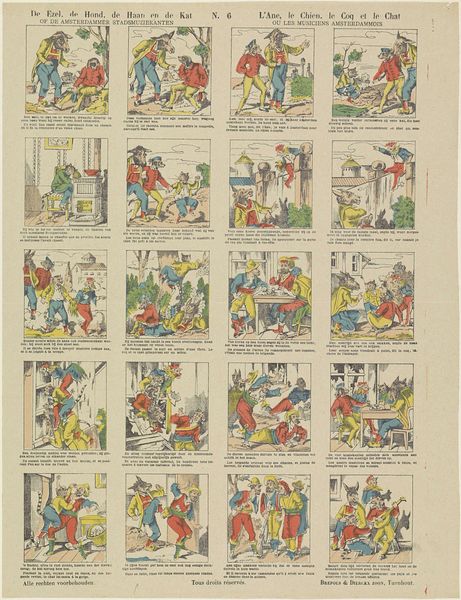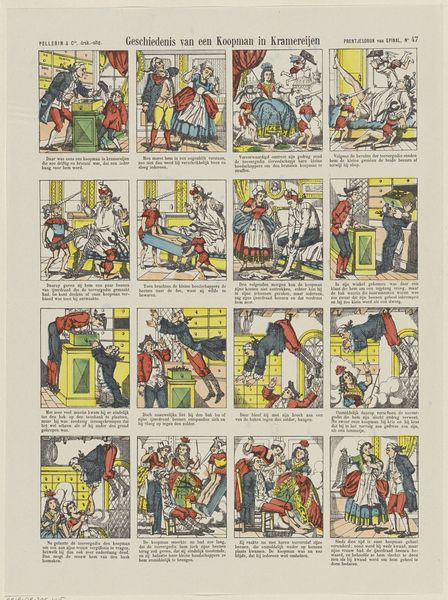
Het betooverd paleis / Le palais habité par les diables 1833 - 1911
0:00
0:00
brepolsdierckxzoon
Rijksmuseum
graphic-art, lithograph, print
#
graphic-art
#
comic strip sketch
#
narrative illustration
#
narrative-art
#
comic strip
#
lithograph
# print
#
personal sketchbook
#
sketchwork
#
thumbnail sketching
#
comic
#
sketchbook drawing
#
storyboard and sketchbook work
#
sketchbook art
#
story boarding
Dimensions: height 372 mm, width 306 mm
Copyright: Rijks Museum: Open Domain
Editor: Here we have "Het betooverd paleis / Le palais habité par les diables," a lithograph from between 1833 and 1911, attributed to Brepols & Dierckx zoon. The whole thing looks like an early comic strip. What historical narratives do you see embedded in this piece? Curator: The multiple panels suggest a clear sequential narrative, perhaps mirroring the rise and fall of power structures, and even the absurdities of political maneuvering within society. Note the satirical elements in representing authority figures and perhaps also those who seem "cursed" or haunted, considering its social impact during a period of burgeoning print culture and shifting class structures. The very presence of Dutch and French text suggests also a dialogue – or perhaps conflict – between cultures and linguistic spheres. Do you think the "devils" are literal or allegorical? Editor: That’s interesting! I hadn't thought about the dual languages implying a cultural tension. As for the devils, maybe they represent social anxieties or the fear of the 'other'? Curator: Exactly. Consider how the depiction of devils might align with societal biases, or project fears onto marginalized groups, thereby solidifying existing power dynamics. Even something like a comic strip format isn't ideologically neutral – who did these stories serve, and whose voices were suppressed? The repetition of figures and narrative echoes may function as critical reflections. Editor: It makes you think about how these seemingly simple images carry such complex cultural information, don't they? Curator: Indeed. By dissecting visual narratives like this, we can better understand how art functions as both a reflection and a manipulator of social norms and cultural ideologies across time. It opens up many more questions, doesn't it? Editor: Definitely. It really brings to life how art can be a powerful tool for social commentary.
Comments
No comments
Be the first to comment and join the conversation on the ultimate creative platform.
